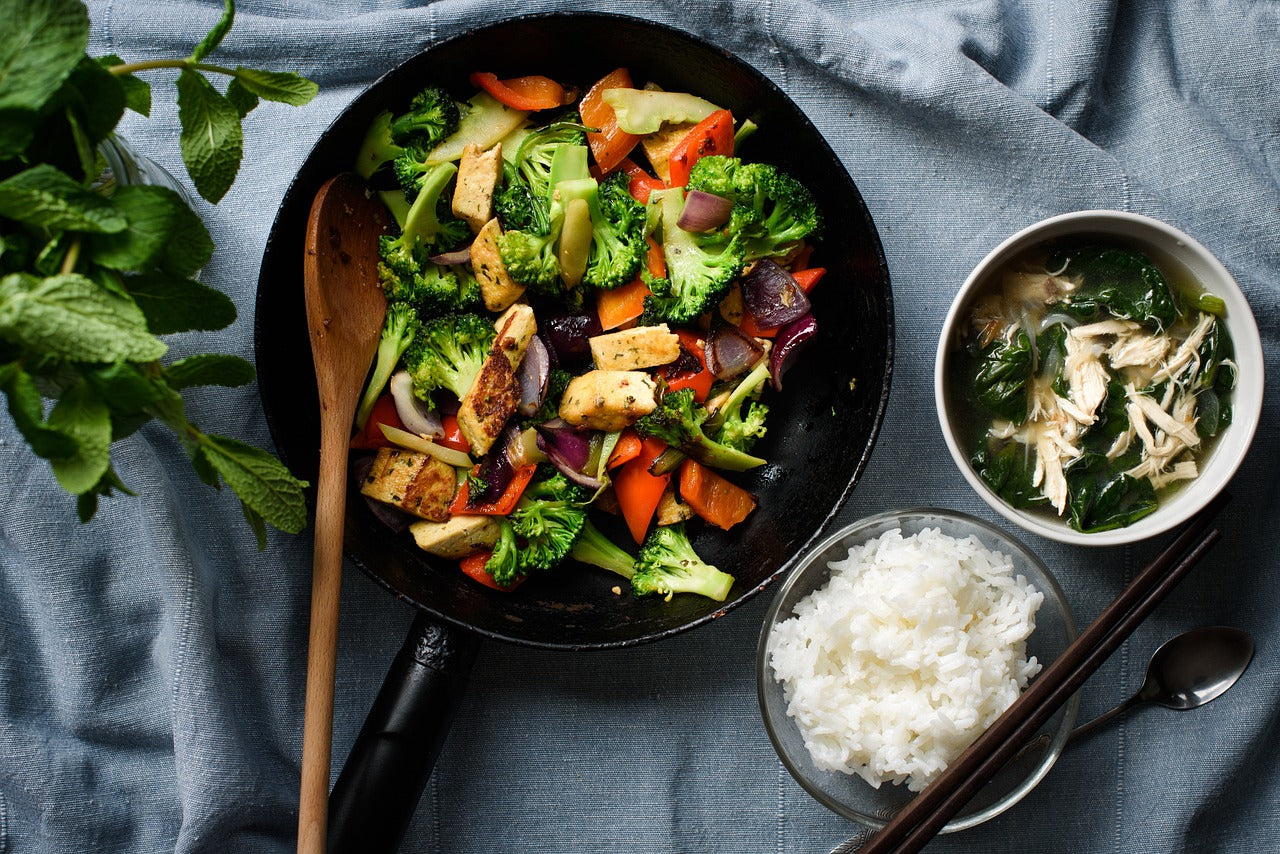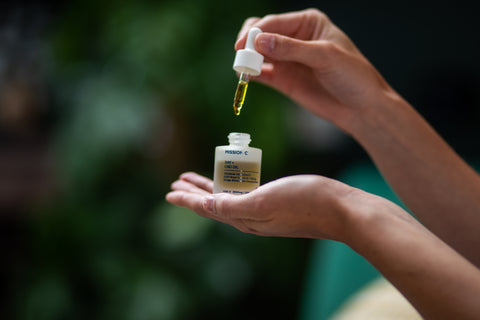
CBD (cannabidiol) oil is becoming increasingly popular as a natural remedy for various conditions, and the active cannabis derivative is frequently infused into a variety of products including topicals, tinctures, gummies and other edibles. The curious amongst you - whether completely new to CBD or simply pondering ways in which you can increase your daily intake - may be wondering: can you cook with CBD oil? Is it safe to do so? In this blog post, we’ll explore everything you need to know about cooking with CBD oil.
Is CBD Oil a Good Oil to Use in Cooking?
The answer to this question depends on how you intend to use CBD in your cooking. Looking to use CBD oil in place of olive, coconut or stir-fry oil in cooking? Then no, CBD oil is not a good replacement, unfortunately – we recommend sticking with your usual cooking oil. If you’re using CBD oil as one of several ingredients in cooking or baking, however, then yes! CBD oil can provide a flavour boost and, of course, a dose of therapeutic wellness benefits. It’s worth noting, however, that if you want to feel the effects of CBD quickly, the most efficient method of taking CBD oil is to hold it under your tongue. CBD oil in food must pass through the digestive system before it is absorbed into the bloodstream, therefore the benefits will take longer to take effect. This is unlikely to be an issue if you are simply looking to increase your daily cannabidiol intake by using CBD oil in cooking.

Is it Safe to Cook with CBD Oil?
Yes, it is safe to use CBD oil in cooking and baking, as long as you use appropriate heat and are mindful of your dosage (more on these later!). Essentially, consuming CBD oil via a home-cooked meal or snack is the same as taking it sublingually or consuming CBD gummies. As long as your CBD oil is extracted from hemp plants and is UK law-compliant, it will contain trace amounts of THC (this is the cannabis compound that gets you high) which ensures you won’t experience psychoactive effects.
Does CBD Oil Flavour Food?
Yes, CBD oil does flavour food, if you use enough of it. CBD oil has a slightly earthy and nutty taste that many people describe as being similar to green tea or dark chocolate. It can be used in savoury dishes such as sauces, dressings, soups and stews, as well as sweet dishes like cakes and biscuits. CBD oil can also be sprinkled over dishes like salads, pasta and pizza for added flavour.
How Does Heat Impact CBD Oil?
Very high temperatures may negatively impact the efficacy of your CBD oil. For maximum potency, you should strive to keep the temperature of your CBD-infused recipes at 175°C or lower. Recipes that don’t typically require any baking, such as salad dressings or smoothies are great options when using CBD oil in food - let your creativity blossom and have fun!
What Kind of CBD Oil Should I Be Using for My Cooking?
You can use any CBD oil of your choice – but be sure to check the ingredients as many oils and tinctures are flavoured. There’s nothing wrong with adding a flavoured CBD oil to your cooking; just make sure those flavours are natural and complement your dish (or only use a couple of drops to avoid a strong taste).
Tips on Choosing a CBD Oil
We recommend choosing high-quality CBD oil from a reliable brand. Cheap products from unreliable sources may mean that you aren’t receiving exactly what is advertised in terms of product potency, purity, etc. Check out the manufacturer; are they reputable? Online reviews should provide a good indication of this. Can they provide independent third-party lab test reports (Certificates of Analysis) for their products? These should be provided by law and guarantee the safety and purity of the product.

You should check the strength of the CBD oil you’re using too. If you’re new to CBD, it’s wise to start with a lower strength and increase your dosage gradually. Personal tolerance levels vary widely due to a range of factors including body weight, body type and metabolism, so the ideal dosage for somebody else may not be the right dosage for you. Work your way up slowly over a few weeks and opt for a higher-strength product on your next purchase if required.
How to Add CBD Oil to Food
Adding CBD oil to food couldn’t be simpler. Most oils and tinctures are contained in bottles with added pipettes. Use the pipette to measure the amount of CBD you’d like to add to your dish and squeeze it in! We recommend using the oil sparingly (if you want a higher potency, use a stronger CBD oil rather than increasing the amount of oil). To avoid losing beneficial cannabinoids and reducing the efficacy of the product, try to avoid adding CBD oil over direct heat. For instance, if cooking on the hob, remove the pan from the heat for a couple of minutes before squeezing in your CBD drops.
Remember, if you’re cooking for one, simply add in your usual single dosage of oil, but if you’re batch cooking, multiply your dosage to ensure one CBD serving per portion.
Storing CBD Correctly
Once you’ve finished cooking, ensure the lid of your CBD oil is firmly tightened to maintain freshness. Store the bottle in a cool, dark and dry place – a cupboard is ideal. CBD oils can last around a year if stored correctly, but prolonged exposure to light and heat can reduce product efficacy.
Final Thoughts
Using CBD oil in cooking is a fun, creative and easy way of increasing your daily CBD intake. While we don’t recommend using CBD oil in place of your usual cooking oil, adding a couple of drops to any dish is simple and effective. Drop into stews and soups, infuse into syrups and salad dressings or simply add a drop or two to your cappuccino – this versatile compound can add flavour while keeping you feeling tip-top.
